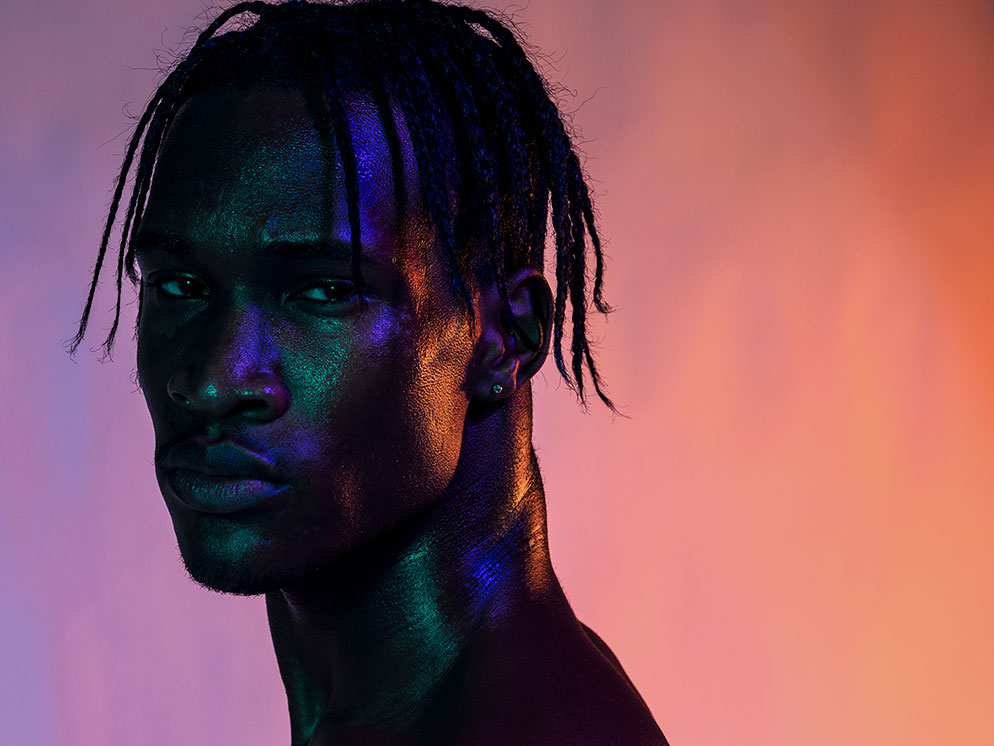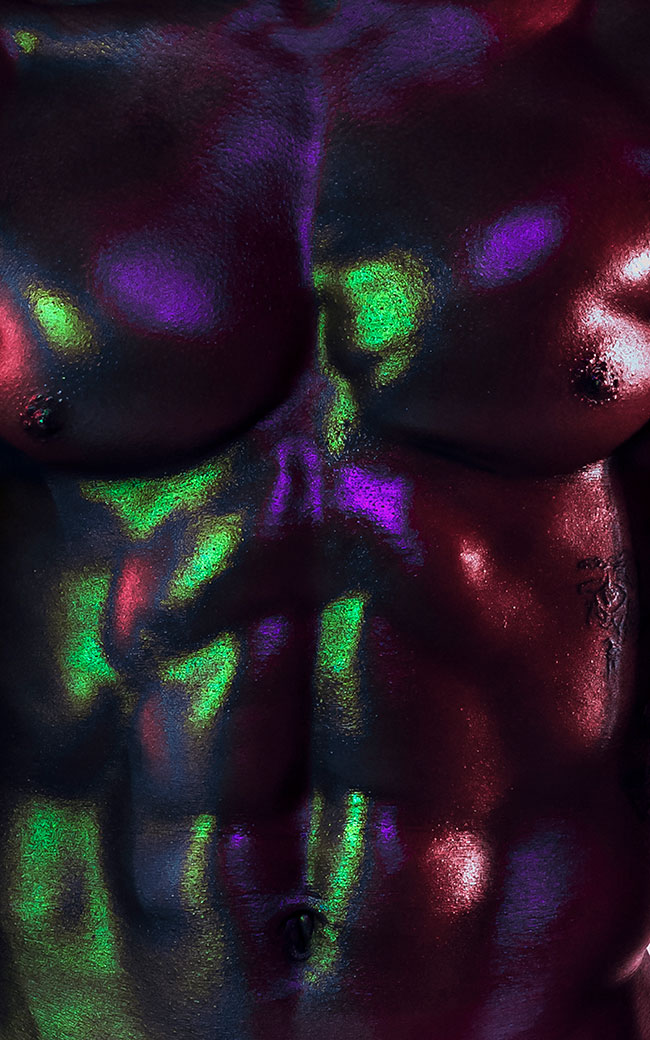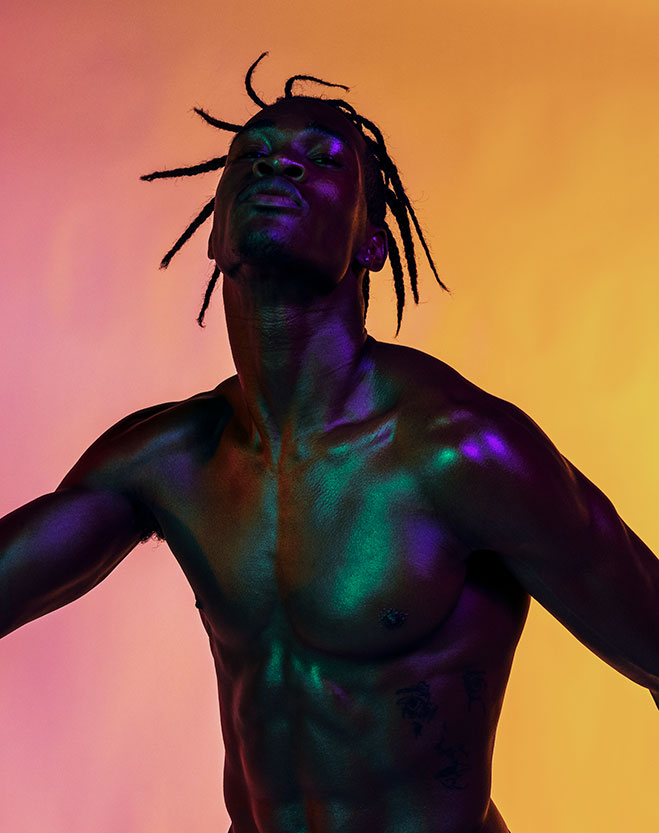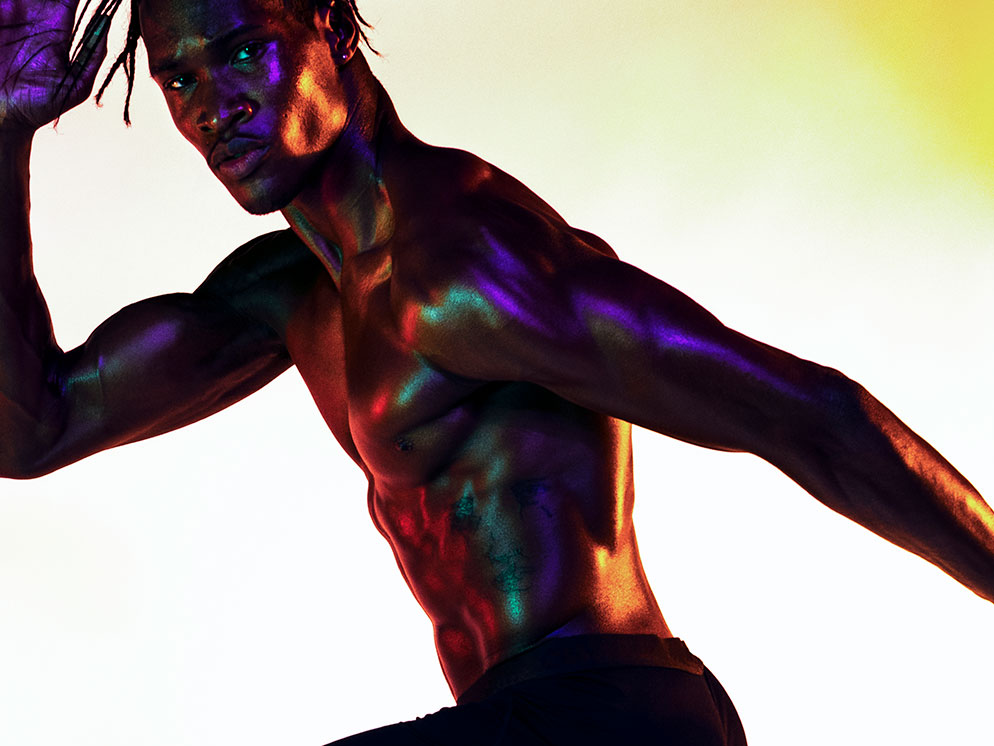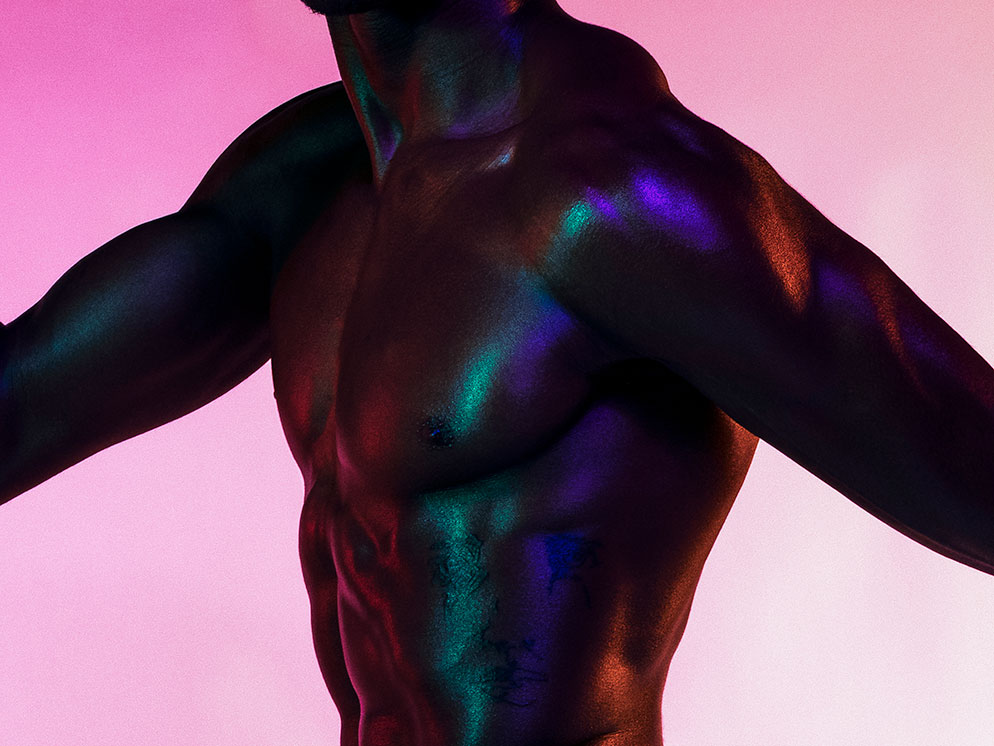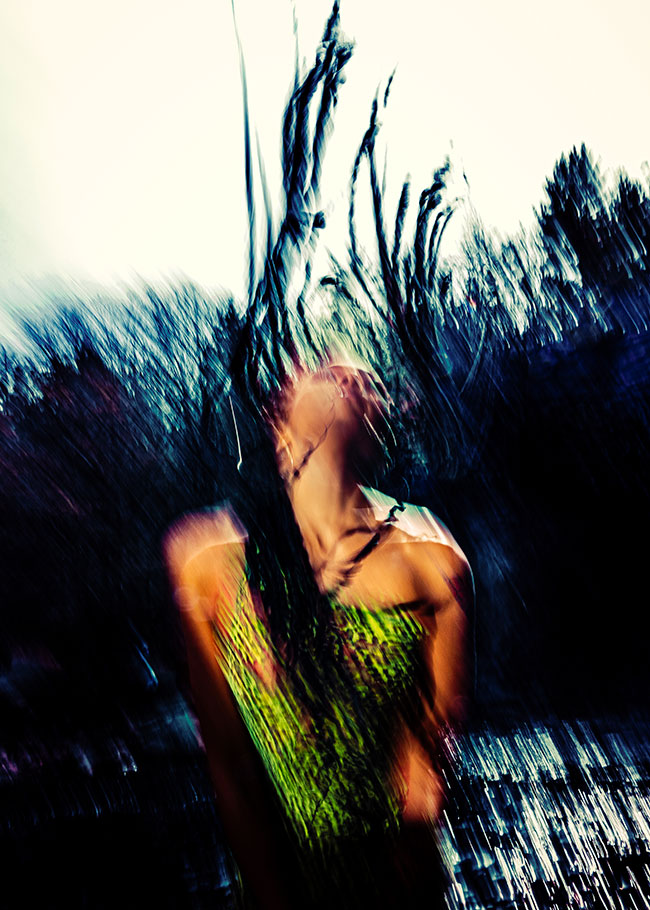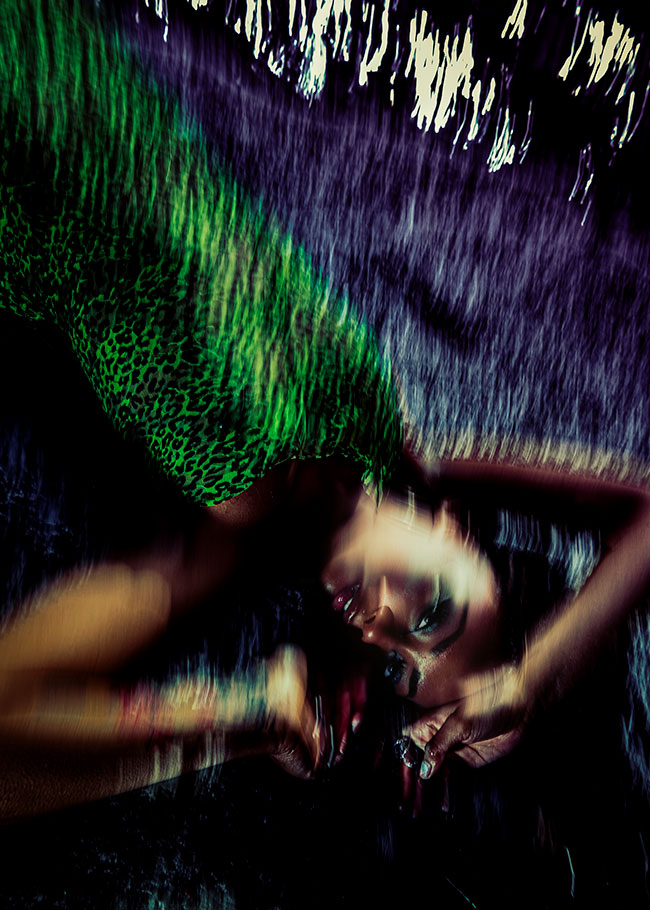The Portrait as Assignment, Documentary and More
This image is stark in contrast just as powerful a portrait, as Nate’s eyes draw you in. Z 7, NIKKOR Z 85mm f/1.8 S lens, 1/200 second, f/7.1, ISO 250, manual exposure, Matrix metering.
How do you go about shooting and delivering multiple images that are a cohesive group, yet not providing images that seem to be duplicates of the same pose? With forethought and planning about where you want the shoot to go and what you need to deliver.
Variety is key, especially when you’re shooting for a client, whether that client is the subject or not.
We discussed this very topic with Malike Sidibe, an up and coming fashion and portrait photographer who often photographs subjects for a variety of clients, from models who want new headshots to editorial and corporate clients with specific needs./p>
He’s recently made the move from DSLR (D850) to mirrorless (Z 7) and all of the images in this article were shot with the Z 7, which has become his primary camera since first picking it up. Malike explains, “I wasn’t expecting to be blown away by it, but I was. It’s very compact and I love that it’s very light but still has as much power as my D850, it fits perfectly in my hands and is very easy to carry anywhere I go. It's a game changer!”
Close crop of the torso, lit by harsh side lighting with multi-colored gels highlighting the model’s muscles. Z 7, NIKKOR Z 85mm f/1.8 S lens, 1/200 second, f/7.1, ISO 200, manual exposure, Matrix metering.
Knowing up front the number of images, as well as the number of variations that clients want to see from a shoot is key to delivering for a client. Some clients may want to see everything you’ve shot—raw/unedited files, while others may want to view only your best selects.
Malike says he generally likes to provide at least a minimum of 20 shots to make selects from. He explains, “[The] number changes depending on the project and clients. For brands I usually send anywhere from 20 to 40 shots for them to pick from. Some clients ask me to round it down to a specific number. For models, I usually send them all the raw shots before I edit for them to review with their agent to select the shots that best fit them.”
The discussion of how to plan a photo shoot to ensure you can create a variety of images came up recently when we were reviewing some of Malike’s images of his friend, a model named Nathaniel. The group of seven images was inspired by ESPN The Body issue, which celebrates the incredible power of the athletic form.
“Nate and I have known each other for about five years. We’re used to working together, we communicate very well and he trusts my vision,” Malike says.
Nate is shown with his head thrown back, hair frozen in motion, this image is another study of the human form as gelled highlights contour the physical form of his body. Z 7, NIKKOR Z 24-70mm f/4 S lens at 52mm focal length, 1/200 second, f/7.1, ISO 250, manual exposure, Matrix metering.
While you may not always be fortunate enough to know your subjects well, a few fundamentals will make it easier to coach your model to perform in a way that fulfills what you want the images to convey to viewers.
Get to know your subjects. “You can make all of your subjects [into] great subjects, if you get to know them right from the start,” Malike says.
Direct your models and allow them to experiment. "Sometimes I also direct them when I want a specific pose or look," he says Sometimes he offers suggestions and then let a subject add his or her own touch to the pose.
“My goal is always to walk away from a shoot with at least one good image that I’m happy with,“ Malike notes. And to this end, he shared some of the ways he goes about doing this.
Color is important in how it is used to direct viewer attention to details in his images. “To me colors are very important. Colors drastically affect the way you view an image.”
Plan your shoots. “I always try to have at least a couple options in looks, lighting style and backgrounds so we have different varieties of images.”
Experiment. “To stay fresh, I’m always looking for new things to experiment with while on set. For example, sometimes I like to use mirrors as reflectors to get a specific crispy harsh look. Or Shooting through something, or sometimes simply changing the perspective to get a different look.”
Mami Wata
Creating collections of images focusing on themes continues throughout much of Malike’s photography.
Malike explains that Mami Wata (Mother Water) is a water spirit, celebrated throughout much of West Africa. “She is often described as a mermaid-like figure with a woman’s upper body, and the hindquarters of a fish or serpent. She may appear in dreams and visions to her devotees as a beautiful mermaid. She is also said to walk the streets of modern African cities in the guise of a gorgeous but elusive woman or man.”
“She is praised partly because she can bring good fortune. Thankful when she’s worshiped, evil if you offend her. Some say she communicates without words. Others describe the encounter as very abstract through contact with water. The spiritual importance of Mami Wata is deeply rooted in the ancient Coasts of West Africa.”
“All the interactions people have had with Mami Wata they’ve described her as very elusive and very surreal.” Malike says that Mami Wata’s ability to change into different figures but still be the same person allows him: “the freedom to be able to portray her in many different ways.”
Malike set out to create a series of images based upon Mami Wata. So far, most of the images for this photo series have been captured underwater. The rest of the images in the series were taken above the water—as was the case for the two images included here.
“The sense of movement in these images is important because it gives the images life. Creating the feel of movement was the most challenging part.”
By controlling the light, color, shutter speed and lines within an image, Malike was able to create this sense of movement, giving the images a dreamlike feeling of being underwater.
Kiara photographed at Lake Minnewaska State Park Preserve as part of the Mami Wata project. Z 7, AF-S NIKKOR 24-70mm f/2.8 lens at 24mm focal length, 1/13 second, f/22, ISO 50, manual exposure, Matrix metering.
Kiara photographed at Lake Minnewaska State Park Preserve as part of the Mami Wata project. Z 7, AF-S NIKKOR 24-70mm f/2.8 lens at 38mm focal length, 1/20 second, f/14, ISO 31, manual exposure, Matrix metering.
Pop-Up studios
One of the more unique projects Malike has been working on over the last few years is his pop-up studios.
In 2016 he’d gotten the opportunity to travel with a non-profit medical organization to Guatemala to document their work. He brought a small photo printer along and near the end of the trip decided to photograph a few of the locals who were getting treated and give them prints. “I remember giving one [woman] a print of her and her daughter. She started tearing up and told me that she had never seen a photograph of herself,” he says, “That’s when It became clear to me that a photograph can serve as many things.”
Inspired by that experience, Malike held his first pop up event in June 2018, in a small gallery space in Manhattan. Promoted only via his Instagram account, Malike had more than 50 people stop by throughout the day to be photographed.
“Seeing the magic and excitement of people jumping in front of my lens to express themselves was truly amazing. In a world where everything is evolving and changing very quickly. I realized from that moment that I want to continue to capture and document people of today for posterity,” he explains.
“My goal with the pop up is to create a collection of images that will capture the cultural elements and expressions at this point in history, across a wide-range of different types of people, styles, families, geographic areas, etc.”
Malike’s first pop up event caught the attention of The Met Museum and In October 2018, the museum assigned him to run a Portrait booth at an Afro-punk festival in Brooklyn, where he photographed about 700 people over the course of the two-day festival.
He has since organized five pop ups: two in LA and three in NY.
Once images are edited, they go into an online gallery for folks to download or order framed prints.
Malike recently set up an Instagram handle as an official account for the Pop-Up Studio Booth: www.instagram.com/PortraitSeriess.

